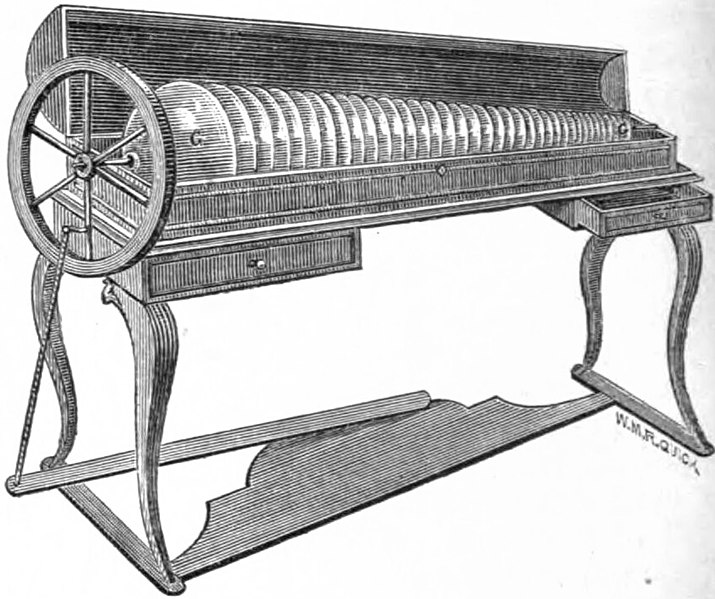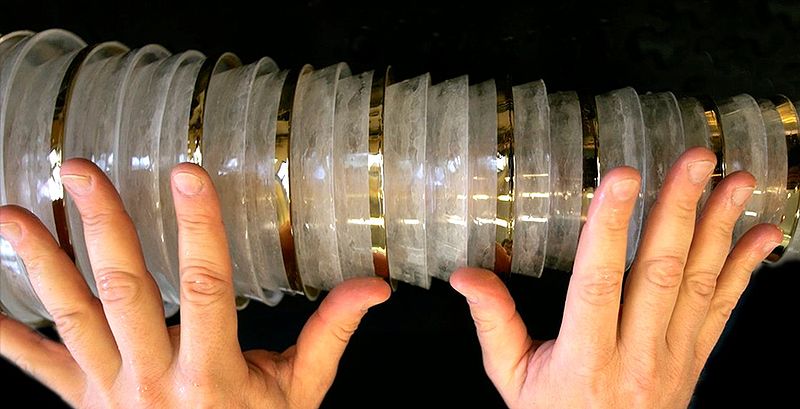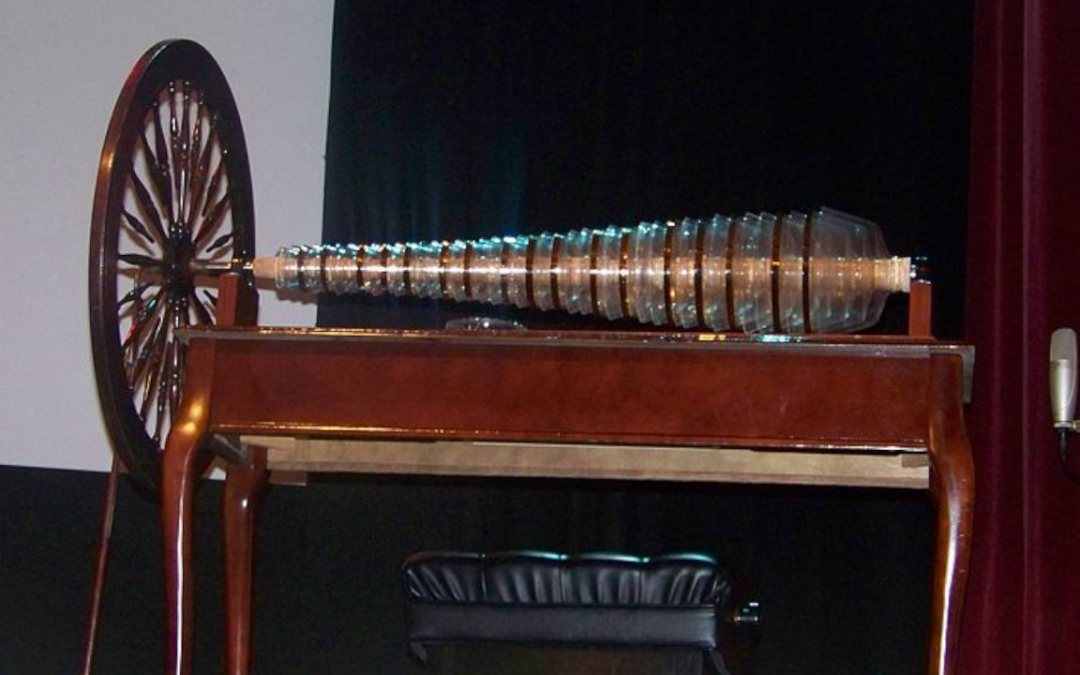Not all musical instruments are made equal. If you play the saxophone it makes you a more interesting person, if you play the bagpipes you have to move away and live in the woods alone. Like a serial killer. And just like a serial killer, there is an instrument out there associated with mysterious deaths. Known as the world’s most deadly musical instrument, it came to be greatly feared – and for a time was illegal to own. This is the story of the glass harmonica.
Benjamin Franklin’s Music
It all began in the 1700s with a man called Benjamin Franklin. Remembered primarily as one of America’s founding fathers, he did a lot of other things too. Later in life he became a fashion icon in France – and there was even a rumor he slept with the French queen. Decades before that he lived in London. In 1998 his home there began to be converted into a museum. During the construction, ten dead bodies were found in the basement. Dated to Franklin’s lifetime, nobody knows for sure how they ended up in his home. So he was a weird guy. One of the weirdest things he did was invent a musical instrument called the Glass Harmonica.
At that point in history, people would often run their fingers along the rim of glasses to produce a musical tone – because in those days people were boring. With different shaped glasses making different sounds, some musicians would play songs on tables full of them. Inspired by this, Benjamin Franklin was inspired to invent a musical instrument. Dreaming of a world where you don’t need a table full of glasses just to play a song, he worked with a glass blower in London. After much trial and error, they developed the Glass Harmonica – a long tube of rotating glass bowls.

The Glass Harmonica
Each bowl had a different musical pitch and was linked by a metal rod. A foot pedal driven by the musician would cause them to spin. The player would still need to wet their finger before playing, but even so, it’s a lot more convenient than a table full of glasses. This sound ridiculous – but what resulted was a unique and haunting sound. And if you’re wondering what it sounds like, here is a brief piece of music produced on the Glass Harmonica. Compared to other musical instruments of the 1700s, it was almost alien like. To be honest I find it a little unsettling, and as it turns out, there might be a good reason for that.
While not yet famous, Benjamin Franklin was a well connected political activist. So he was constantly travelling and meeting influential figures. Everywhere he went, so did his glass harmonica. With it being his favorite invention, he took every opportunity to demonstrate his playing. In the world of 18th century dinner parties, it kind of went viral – everyone was talking about it. Many other people got a glass harmonica made and began practicing. Famous composers wrote music for it – including Mozart and Beethoven. Some players even gained fame – like Marianne Kirchgessner, a blind woman who somehow mastered the glass harmonica.
Becoming a craze, it seemed as if the glass harmonica would be mass adopted as a major instrument. That instead of learning piano or harp, young people might take to it instead. But then something strange happened. – Music stop – Now I know what you’re thinking – this entire thing is strange. And you’re right. But this is really weird.
Dangerous Musical Instrument
As the popularity of the instrument grew, mysterious incidents began to be reported. Rumor spread that hearing the music live could turn a person insane. In fact, they said it could turn the player mad too. This could come on gradually or suddenly. Most of the time, players were said to grow more depressed the longer they practiced – with years of Glass harmonica playing possibly leading to suicide. But it could also have immediate effects. Anything from a mild headache to a seizure could be suffered by audience members. It was even claimed the sound of a glass harmonic could cause pregnant women to give birth prematurely.

Many players died unexpectedly – including Marianne Kirchgessner. And when a child attending a performance died mid song, the glass harmonica was banned in many parts of Europe. People genuinely believed there was something about the instrument that was dangerous, but no one knew why. A leading theory was lead poisoning, since lead glass was common at the time. But while lead was used to make glass at the time, this would not affect the crowd in any way. It also probably didn’t affect the player much either, considering how many other household products also had lead. It’s unfair to blame just the glass, that’s called bullying.
If not the physical quality of the glass, maybe it was something to do with the music itself. Some said the music was inherently evil – and could open a temporary gateway to hell – but those people were just weird. Although, the music itself can be quite haunting.
Truth Behind The Glass Harmonica
In my opinion the illness associated with the glass harmonica can be explained by two things – coincidence and psychology. The unnerving feeling a lot of people get from hearing the music can trigger latent health issues through stress. As illness came to be associated with the glass harmonica, placebo might also be a factor. But it remains a mystery.
No matter what is true, the rumor and bans were enough to basically kill the instrument. By the mid 1800s almost no one played the glass harmonica. A few more generations went by and most people just forgot about the instrument. There were always a small number of players who carried on – even today – but to be one of those people you need to really want to learn. I mean, I would never have learnt guitar if I had to first go to a glass blower and get one made. That alone has always been a major hurdle for the glass harmonica. It’s also just not a very versatile instrument.
But none of that mattered to Benjamin Franklin. Until his dying days, the glass harmonica was a favorite invention of his. So that’s it – the story of the world’s most deadly musical instrument. If you’re wondering why it’s called the glass harmonica, it’s a play on the Italian word for harmony. It has nothing to do with the instrument we now call the harmonica – in fact, the harmonica was invented 6 decades after the glass harmonica.
This might be confusing but it could be a lot worse. The glass harmonica has alternate names from the 1700s. Names like hydrodaktulopsychicharmonica.

